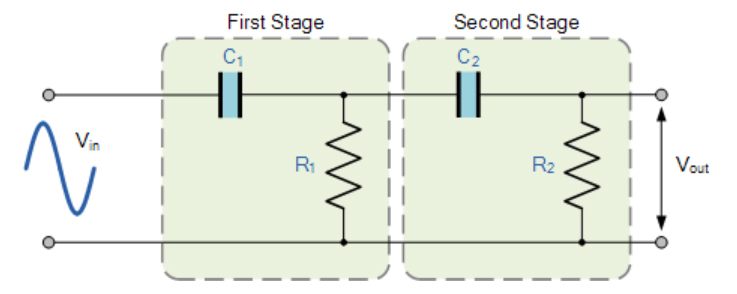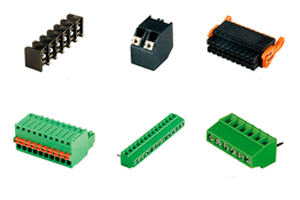理解被動高通濾波器:從基礎到設計
Author:admin Date: 2025-05-23 10:10 Views:536
Filters are not new in electronics. Depending on your needs, you are likely to come across several types when searching for a good filter design. Such an example is a passive high-pass filter. It is a popular circuit in audio processing and signal conditioning.
With that in mind, what else is there about passive high-pass filters? This guide explores this topic further to help you learn more about such types of filters.
Passive RC high pass filter tutorial!
What is a Passive High Pass Filter?
The passive high-pass filter is a type of electronic circuit that allows signals with frequencies above a cutoff point to pass while blocking or attenuating signals with frequencies lower than that cutoff point.
It is called a passive filter because it uses passive components such as capacitors, inductors, and resistors to achieve this filtering capability. Also, no external power supply is necessary to operate it.
Components of a Passive High Pass Filter
The basic components are usually the same whether it is a first-order passive high pass filter 或者 2nd order passive high pass filter. They include resistors, capacitors, and inductors.
The resistors are vital for controlling the current flow in the circuit. They also help determine the cutoff frequency of the filter.
The capacitors block low-frequency signals and allow the high-frequency signals to pass.
As for the inductors, they are ideal for handling current and can still block the low-frequency signals.
How a Passive High Pass Filter Works
這 passive high-pass filter circuit diagram helps us better understand how a passive high filter works. Such a circuit is expected to block low-frequency signals below a certain cutoff point. How does this happen?
In an RC circuit, you get the resistors and capacitors for a high-pass filter. The reactance of the capacitor depends on the frequency. At low frequencies, you get high reactance, hindering the flow of low-frequency signals. When the frequency is high, the reactance is low, allowing the high-frequency signals to flow more readily.
Another important parameter to consider is the passive high-pass filter cutoff frequency. This is where the filter’s performance transitions. Above this frequency, signals with higher frequencies pass with minimal attenuation. However, it is vice versa for signals with lower frequencies.
The output of the RC high-pass filter is taken across the resistor. This is because the capacitor blocks the low-frequency signals, so you can get those that pass at the resistor.
Types of Passive High Pass Filters
There are several types available for you to consider. Below are the common types to expect.
First-Order Passive High Pass Filter

This type of passive high-pass filter has the RC configuration. This means it contains a capacitor and a resistor connected in series. The input signal is applied across the capacitor while the output is measured across the resistor.
At high frequencies, the capacitor’s reactance becomes very small. This means it acts as a short circuit. The result is that the high-frequency signals can pass through without blocking.
At low frequencies, the capacitor’s reactance is very large. This makes it act as an open circuit. As such, the low-frequency signals are blocked or attenuated significantly.
The cutoff frequency occurs when the filter’s attenuation increases. It is determined by the relationship between the capacitance and resistance and given by the formula fc = 1 / (2πRC).
What about the passive high pass transfer function? This is the relationship between the input and output signals in the frequency domain. It can be determined by the formula H(s) = Vout/Vin = R / (R + 1/sC).
Second-Order Passive High Pass Filter

In the passive second-order high-pass filter, you combine two passive RC high pass filters connected in series.
Still, the values of the resistors and capacitors determine the overall filter characteristics and cutoff frequency.
The operation of the second-order high-pass filter is similar to that of the first-order filter, only that it has a steeper roll-off. This results in more effective attenuation of the unwanted low frequencies. Also, improved signal quality can be achieved as the unwanted signals are filtered more efficiently.
The cutoff frequency for such a passive high-pass filter can be determined using the formula fc = 1 / (2 * π * RC).
Applications of a Passive High Pass Filter
The gain of passive high pass filters and other characteristics make the circuit a good option for various devices. Below are examples of where you will likely find such filters in use.
Audio Systems
The filter can be used in audio amplifiers as coupling capacitors to block the DC offsets and prevent DC signal amplification.
The same is also crucial in speaker systems, especially for speakers such as tweeters. They help direct high-frequency signals while blocking the low-frequency bass signals.
They can also be used to remove low-frequency noise or hiss, which improves the overall audio quality.
Image Processing
The passive high-pass filter is still a good choice for image processing applications. For example, it can help with image sharpening by emphasizing the high-frequency components and enhancing the edges and details of the image.
Communication Systems
The passive high-pass filters offer good performance for filtering interference in communication systems. They filter out low-frequency interference, such as in radio frequency systems, to ensure clear signal transmission.
The other applications worth considering for this high-pass filter include:
- Sensors and instrumentation
- Seismic data processing
- Radar systems
- Biomedical signal processing
Mistakes to Avoid While Designing and Building a Passive High Pass Filter
這 2nd order passive high pass filter transfer function can help understand what kind of gain to expect from the filter. From this, you can design and build your high pass filter. However, what are the mistakes you should avoid?
- Poor grounding can affect the high pass filter’s overall performance. You should make sure that your circuit is properly grounded to minimize noise and maintain accurate signal filtering.
- Do not neglect the return path of the filter. The high frequency signals do not always follow the least resistant path. It is key to understand how such signals behave and their return path for effective filtering.
- The component placement on the PCB often affects filter performance. It is best to keep low-frequency and high-frequency components in separate areas to minimize interference.
- Choosing the right values for components is highly recommended. This determines whether you actually get the desired cutoff frequency. To get accurate performance, it is best to use components with low tolerance values.
- Do not ignore component tolerance. The actual values may vary from the nominal value, which can cause the filter to behave differently from the expectation. So, if the application is critical, get high-precision components with tighter tolerances.
結論
The passive high pass filter remains a big part of electronic devices today. This is because of how they work. We find them quite popular in audio systems, but they can still be good for other applications, such as signal processing. Designing and building such a high pass filter can be cheaper or expensive depending on the number of components you use. In any case, it is best to use simulation software to see if you achieve the performance you want before you can build the passive high pass filter.
請發送 RFQ,我們將立即回覆。
常見問題
What is the difference between passive and active high-pass filters?
Passive high-pass filters use passive components such as resistors, capacitors, and inductors. Active high-pass filters use active components such as op-amps and often offer more control over the filtering characteristics.
Can you build a passive high-pass filter without a capacitor?
Capacitors are important in passive high-pass filters. However, you can use inductors as an option. We see capacitors being more common for applications involving audio and low-frequencies.
Can you cascade multiple passive high-pass filters?
Yes. When cascading such filters you end up with the second order or more passive high pass filter. In this case, it steepens the roll-off and can deliver on good performance as filtration is better.


